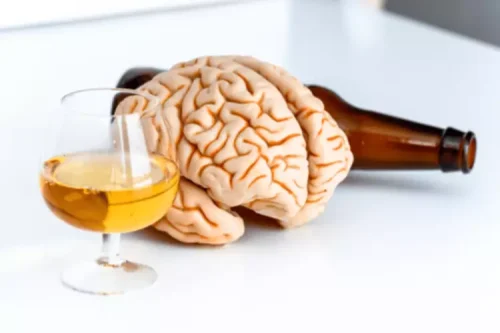
Consistent with previous research [2,7,8,11], we found lower short-term remission rates among individuals with alcohol use problems who did not participate in treatment or AA soon after initiating help-seeking than among those who did. These results add to growing evidence that participation in treatment and/or AA contributes to better short-term alcohol-related outcomes. In earlier analyses based on this sample, we identified 1-year risk factors for overall 8-year non-remission [31].

Narcotic Abuse

During a mental relapse, the patient has an internal struggle between the desire to resume using and the desire to remain abstinent. Take our short alcohol quiz to learn where you fall on the drinking spectrum and if you might benefit from quitting or cutting back on alcohol. All authors have completed and submitted the International Committee of Medical alcohol relapse statistics Journal Editors form for disclosure of potential conflicts of interest. Adam Sherk reports institutional support from the Canadian Cancer Society and Canadian Institutes for Health Research. Recovery is characterized by continual growth and improvement in one’s health and wellness while managing setbacks, which are a natural part of life.
After Rehab, What Does Recovery Look Like?
Behavioral therapies help people in drug addiction treatment modify their attitudes and behaviors related to drug use. As a result, patients are able to handle stressful situations and various triggers that might cause another relapse. Behavioral therapies can also enhance the effectiveness of medications and help people remain in treatment longer.
- Behavioral therapies help people in drug addiction treatment modify their attitudes and behaviors related to drug use.
- Anhedonic depression symptoms, cigarette smoking status, and days since last alcohol use prior to treatment were significant predictors of relapse in Veterans 6 months following residential treatment for AUD.
- Thus, the validity of spontaneous recovery is primarily anecdotal at this point.
- Some examples of Schedule IV drugs are narcotics, muscle relaxants, and commonly prescribed medications for anxiety and depression, such as alprazolam.
Careers – Join Our Team

We used a regression-based estimation model [48] and information from baseline and completed follow-ups to impute missing values; as noted earlier, more than 90% of participants completed at least two of the four follow-ups. There are many things that can be done to reduce the risk of alcohol relapse. These include building a strong support system, learning healthy coping skills, practicing good self-care habits and developing a structured routine. Limitations of the study include a sample consisting of all men selected from an urban metropolis was not representative of all demographics. The study was conducted in a deaddiction unit among patients seeking treatment, and hence is not representative of all alcohol and opioid users. A longitudinal study may do more justice to a dynamic process such as relapse.
- There is considerable information about short-term remission rates among individuals who have been treated for alcohol use disorders, but much less is known about prospectively ascertained natural remission rates.
- In addition, we examined interactions between the help status and relapse status groups.
- Alcohol relapse rates are high, but there are many factors that can increase or decrease your risk of relapse.
- During each period, among all excessive alcohol use cause of death categories, death rates among males were highest from 100% alcohol-attributable chronic conditions.
- Also, their ability to provide a wide range of interventions ranging from supportive therapy to medical interventions often proves to be a valuable asset to patients.
- For a fuller list of behavioral changes, see the warning signs listed below.
While cirrhosis scars from excessive drinking are irreversible, quitting alcohol and leading a healthier lifestyle can help your liver heal from alcohol-related liver disease. The percentage of alcoholics who recover and stay sober is about 35.9 percent, or about one-third, according to the National Institute on Alcohol Abuse and Alcoholism. Relapse is a common stumbling block during the recovery process and does not mean that you should give up on becoming sober. Different types of relapses exist, including short-term slips, lapses and longer-term relapses. Alcohol relapse occurs in almost one-third of recovering alcoholics during their first year of sobriety.
- Nurses are well placed to serve a key role in teams seeking to help individuals in recovery avoid relapses.
- Each individual receives a personalized care plan tailored to their specific needs.
- The Recovery Village aims to improve the quality of life for people struggling with substance use or mental health disorder with fact-based content about the nature of behavioral health conditions, treatment options and their related outcomes.
- As a result, disulfiram acts as a deterrent against an alcohol relapse until the body metabolizes the medications.
- One primary concern in addiction treatment is the high rate of relapses within a short period after even the most intensive treatment.
AA Success Rates and Statistics
Ria Health is an innovative online alcohol addiction treatment program that can help you reduce your alcohol consumption or stop drinking altogether. Our modern approach removes many of the barriers to seeking help and makes treatment more accessible. https://ecosoberhouse.com/ According to national surveys, only a third of individuals struggling with alcohol addiction attempt to quit every year. Of these people, just 25 percent successfully reduce their alcohol consumption for more than a year afterwards.
Comparison with Other Addictions
Healthy Lifestyle Choices

I’m Seeking Help
- According to national surveys, only a third of individuals struggling with alcohol addiction attempt to quit every year.
- Research shows that majority of abstinent alcohol and/or opioid dependence subjects relapse within 1 year.
- Many of the effects of drinking every day can be reversed through early intervention.
- This underscores the importance of comprehensive alcohol treatment programs that address both the physical and social aspects of alcohol misuse.
